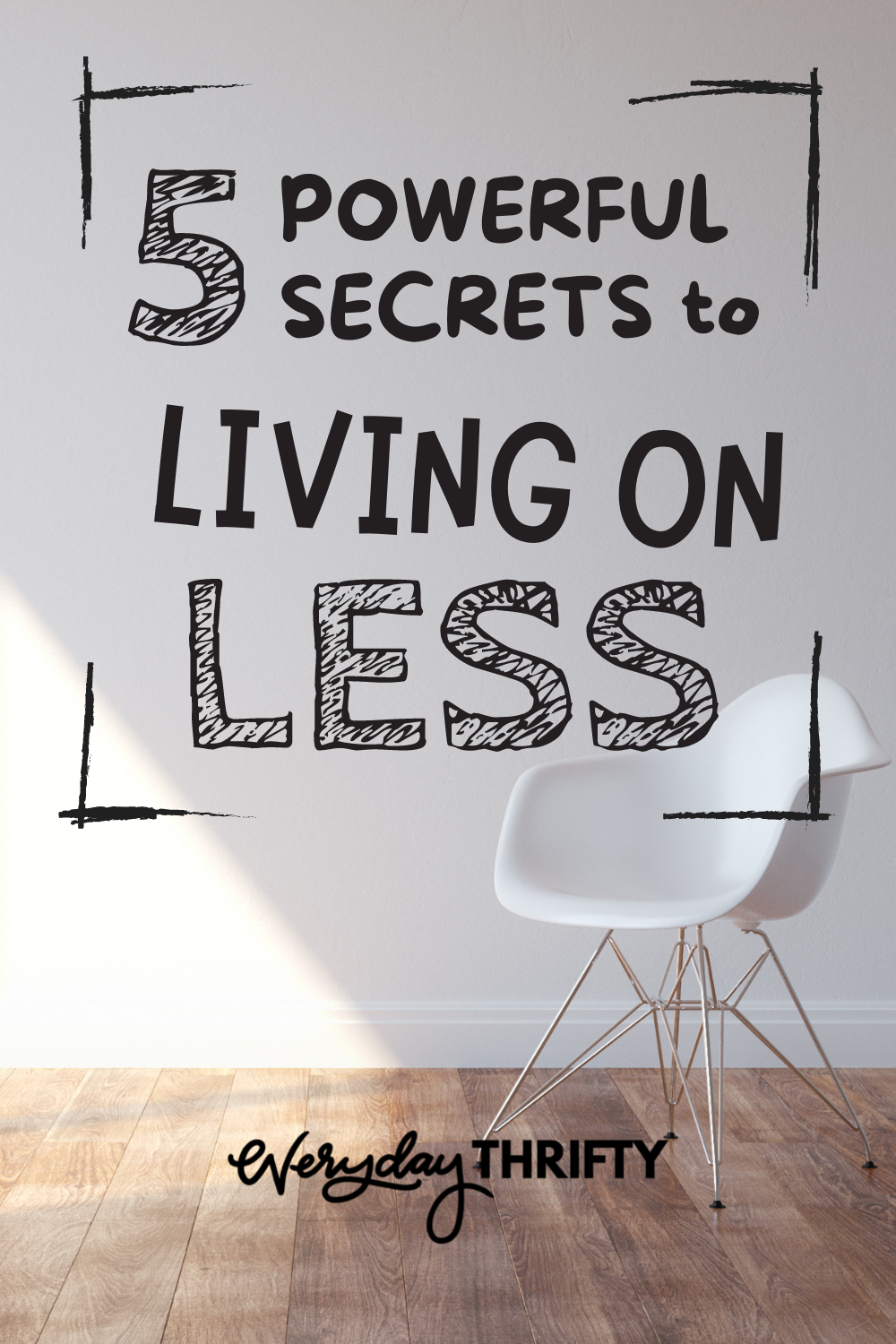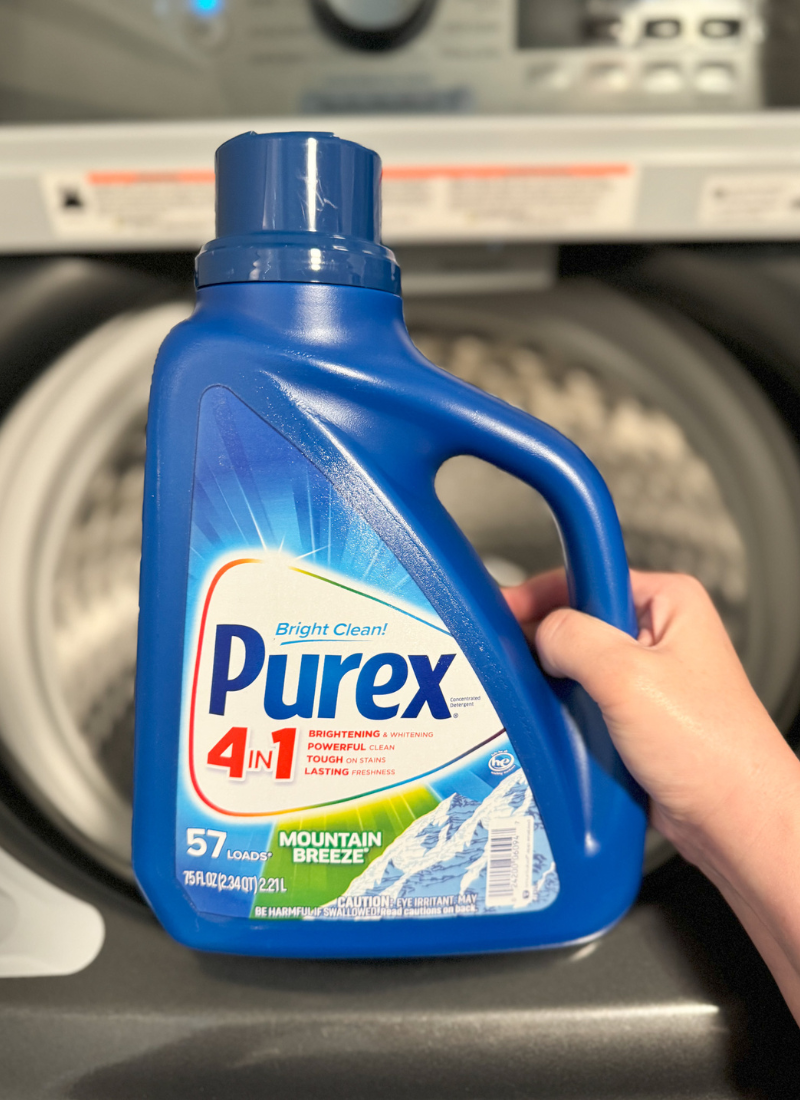Whether you’re a CEO making millions a year or a teenager working odd jobs over the summer, everyone should cultivate a frugal mindset and develop the mental habits for living on less. It may get a bad rap, but frugality is truly a lost art. We could all benefit from learning to live well on less.
Many people associate “frugal” with “cheap.” Being “cheap” implies cutting costs and saving money to the detriment of our health, our sanity, and the people around us. In contrast, “frugality” is about streamlining our lives, finding out what’s really important, and making a conscious decision to choose quality of life over quantity.
For these reasons and so many more, we encourage you to begin developing a frugal mindset and embrace living on less. To help, we’ve put together a shortlist of essential mental adjustments that will help you cultivate a healthier attitude about your finances.
This post may contain affiliate links which means that I may receive compensation at no extra cost to you if you make a purchase from a link found on my site. Please review my privacy policy for further details. As an Amazon Associate, I earn from qualifying purchases. Thank you for your support in allowing this site to continue!
5 Crucial Mental Habits for Living on Less
1. Know What You Need
Before you can know what you need, you have to be able to define a “need.” Probably the best way to do that is to contrast needs versus wants. This is a critical first step because most over-spenders confuse needs with wants.
Now, some may argue that needs should be reduced to extremely sparse supplies like water, bread, and basic shelter. Those are survival needs. So, I want to, at the beginning, make a distinction between the absolute least we need to just survive and the least we need to thrive in a modern world. That can include things like transportation, a smartphone, and Internet service, and that’s aligned with what is meant here by need.
To help think through all the things that you need in order to do your job, support your family, help your community, and grow as a person, start by making a list of all of these needs. Include things like a car, a computer, health insurance, healthy food, clean water, etc. Get that information out of your head and onto paper; doing so will help you make judgments about what are true needs vs true wants.
You may want to check out our article 37 Brilliant Frugal Living Tips from the Great Depression for more inspiration.
2. Know What You Want AND Why
Now that we’ve talked a little about needs, it’s time to turn our attention to the subject of wants. There are some things that obviously fall into the category of wants: things like jet skis, designer jeans, and concert tickets.
Developing a frugal mindset isn’t about eliminating everything that makes you truly happy in life. It’s about trying to discover the true source of happiness. To do that, you have to begin untangling the act of spending money from happiness itself.
Now, to be fair, there are plenty of non-essential things that I really love. Those non-essentials add a lot of color and joy to my life for a lot of different reasons.
Being frugal doesn’t mean giving up everything! It means being in the driver’s seat when it comes to material possessions. The key to getting a handle on your spending is knowing why you want what you want. Why? is a powerful question in any area of life!
So go ahead and make a “Wants List” now. When that’s complete, go through each item and ask yourself why you want this or that. If you have a lot of wants on your list, you may only need to perform this exercise on the first few items to gain some valuable insight into what makes you tick.
We strongly suggest you check out our article How To Stop Buying Stuff: 7+ Simple Ways That Actually Work.

3. Stop Caring So Much
Going frugal and embracing a more minimalist lifestyle takes a bit of courage. It’ll involve not caring so much about what other people think or looking over your shoulder at what other people have. The temptation to compare yourself with others has always been there. But now, more than ever, that temptation is even harder to overcome in our modern, super-connected world!
For good or for bad, social media is here to stay. One of the downsides of it is that we all tend to capture and post the bests parts of our lives online. We snap photos of our best angle and take pictures of the nicest room in our house.
Creating mental habits for living on less involves being brave. That bravery, that not caring, comes from knowing what you need, what you want, and why you’re doing the things that you’re doing. It also comes from embracing the idea that the brands you buy and the life you present to the world is not the ultimate form of self-expression.
4. Tend to the Small Things
We’ve all been guilty of saying things like, “It’s ONLY $4.99” or “If I switch service, I’ll ONLY save a couple of dollars a month.” The next time you hear the words “It’s ONLY…” come out of your mouth, stop yourself before you complete that sentence.
Only is a minimizing word. It’s used to make things appear smaller than they really are. But given the right perspective, small things like a cup of coffee or that little discount on your cell phone bill will become noticeably powerful.
It’s true that a moderately priced beverage isn’t much money. But, $4.99, twice a week, for an entire year is $518.96. That $518.96 total is a much bigger number than $4.99.
Annualizing those frequent purchases shows you the payoff for changing a habit. Maybe you don’t want to give up coffee for a year. I get it! Instead, you might decide to make your coffee at home more often. Or other cost-cutting solutions like cutting back on streaming services, going out to lunch daily, or shopping at the mall every weekend.
Small, frivolous purchase habits add up to a lot of money over time. The good news is that positive habits do as well. Picking up loose change every time you see it or making a few bucks a week from a side hustle can make a big difference financially over time.
To become more aware of the little things that may be slowly robbing you and preventing you from retiring soundly or paying off your house early, start by making another list. This time jot down all of the little, non-essential items that you buy on a regular basis and annualize the dollar amounts. You’ll be shocked when you see those little things under the microscope!

5. Don’t Forget About the Big Things
I know we just spent time talking about the importance of little things. But the big things should not be neglected either. If you’re struggling to get ahead and stay ahead financially, you may need to cut all frivolous spending to create some margin. All of those cuts, while important, may not be able to outweigh some of the other, far bigger financial decisions you’ve already made.
Specifically, I’m speaking about your house and car. If you own too much house or too much car for your current income, cutting out that $4.99 cup of coffee won’t make a huge difference. You may need to downsize or refinance. The same goes for your car or cars. It may mean going down from 3 cars to 2 or 2 to 1 or from a luxury car to an economy. Remember, be brave! And, don’t be afraid to reach out to your lenders and local financial professionals to navigate these waters.
Final thoughts on Mental Habits for Living on Less
We hope you’ve been inspired to start living intentionally, living frugally, and developing mental habits for living on less. It may not be a big change for you, or it could be an entire paradigm shift.
Regardless, be sure to take the principles we’ve presented and use them to help you establish a healthy relationship with your money.
Let us know in the comments below: What habit of living on less is the most difficult for you?





Leave a Reply